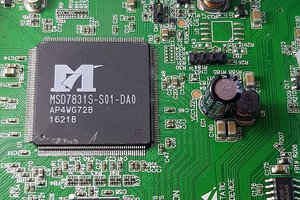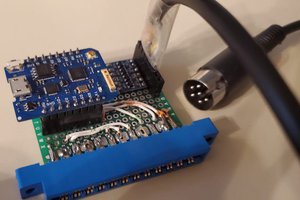All files for this project are in the dropbox link. The main "App" file is App3518 and it is in the Dropbox link. This file is also the local webserver. It is responsible to posting video data to the MeShare website. You can downlod the MeShare app for IOS and Android as well if you would like to poke around in that.
What I am hoping for is some others that want to use this camera to get involved in the reversing of the networking protocol. I am not 100% certain.. But it might make more sense to place a different "app" on the device that we write and can post all the video data straight to our server code.
Amazon sells these cameras for around $38 here:
http://www.amazon.com/gp/product/B00ZZ4HX1K
Cameras known to run the same software (perhaps different hardware)
- Zmodo ZH-IXY1D
- Zmodo ZM-SH75D0001
If you know of a Zmodo camera running the same version (or contacting the same cloud servers) leave a comment and I will add them to the list. The App3518 has the shasum of ba5fa306d519c57124f9de96a1f007f0. App3518 is the main binary that runs on these Zmodo* cameras.
 ril3y
ril3y




 Christoph
Christoph
 yOyOeK1
yOyOeK1

 jaime
jaime
I bought this camera from Frys Electronics and they list it as the Zmodo ZM-SH75D001-WA. The Packing List and label on the shrink wrap also call it the ZM-SH75D001-WA, but the carton and the camera itself only refer to the ZH-IXY1D. This confirms what chris wrote on 12/10/2015 below and the idea that these were rushed out the door.
The Zmodo site also has a Category on the KB page called FUNLUX. There are some references to this Zmodo camera (both numbers) on their "forum". The 2 different Zmodo model numbers add to the difficulty and confusion when searching for info on it.
I can confirm that a generic cell phone charging battery and cable will power the camera with no modifications.
I am not a programmer and can't add much technical help here, but I do want to mention that I can record a live stream from my unit directly to my QNAP NAS. I do it from the IE web GUI by right clicking on the live image and select Record. It records in a proprietary .264 file extension format that can't be played in VLC, MPC, DVDFab Media Player 2 or any other player I have tried. A Russian site I looked at hinted that the Zviewer application from Zmodo can play them, but I have not been able to do that. MediaInfo can read the data and a sample recording looks like this:
Format : AVC
Format/Info : Advanced Video Codec
File size : 28.7 MiB
Video
Format : AVC
Format/Info : Advanced Video Codec
Format profile : Baseline@L3.1
Format settings, CABAC : No
Format settings, ReFrames : 1 frame
Format settings, GOP : M=1, N=100
Width : 1 280 pixels
Height : 720 pixels
Display aspect ratio : 16:9
Color space : YUV
Chroma subsampling : 4:2:0
Bit depth : 8 bits
Scan type : Progressive
Note that there is no info on duration or Bit Rate, etc.
A readable BMP image CAN be saved in the same manner, just choose Capture instead of Record. The image I saved is 1280x720 and is 2.60 MB in size.
I have very little knowledge of Linux, but I do have a Raspberry Pi and am willing to help out testing with it or Windows if needed.
Hope this info is of use to a few of you.